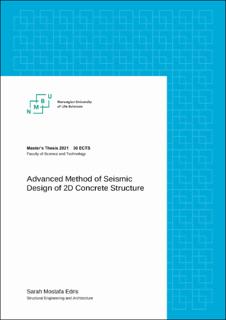| dc.description.abstract | Recent worldwide devastating earthquakes have highlighted the risk of many existing concrete structures of a total collapse or seismic damage because of their inadequate mechanisms of resisting the lateral forces. In order to decrease the destruction and economic losses, existing structures can be renovated. The rehabilitation of existing buildings can limit the damage that affects public safety and the building's function ability after this catastrophe.
The retrofit design is a multi-parametric field; the seismic capacity insufficiencies of the vulnerable building must be examined with regard to the materials, techniques, and analysis methods to develop a good upgrading approach. Many techniques, such as shear walls, jacketing, steel bracing, etc..., were and continue to be in use. Most of them put the building out of service for long periods. However, others provide benefits in terms of costs and simplicity of implementation and may affect the facade. Many researchers are working on helpful studies to include CLT in the existing buildings’ retrofitting process. CLT has very effective sides regarding its environmental impact, weight, implementation, and shear resistance as a structural material.
This thesis introduces an advanced seismic design method by evaluating the resulting seismic performance of an existing reinforced concrete building retrofitted by CLT panels. The suggested retrofitting solutions vary by CLT panels thickness and the connector locations. Convenient finite element models of the two-dimensional reinforced concrete frames, the bare and retrofitted frames, were performed using SAP2000. The Response Spectrum analysis as a linear dynamic analysis was conducted to design and evaluate the seismic behavior according to Eurocodes criteria. Then, a nonlinear static analysis using Pushover was executed to observe the damage state of the models using the Capacity Spectrum Method. The analysis has shown that using CLT panels enhances the seismic performance of the existing building; the determination of CLT panels' thickness, and the connectors' location affect the deformation capacity, the ductility, and the stiffness of the structure. | en_US |

